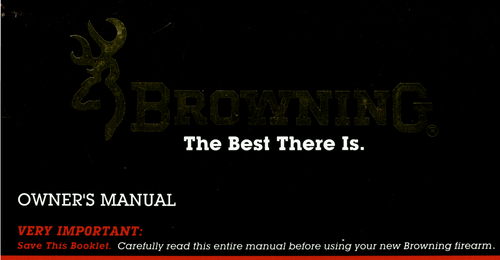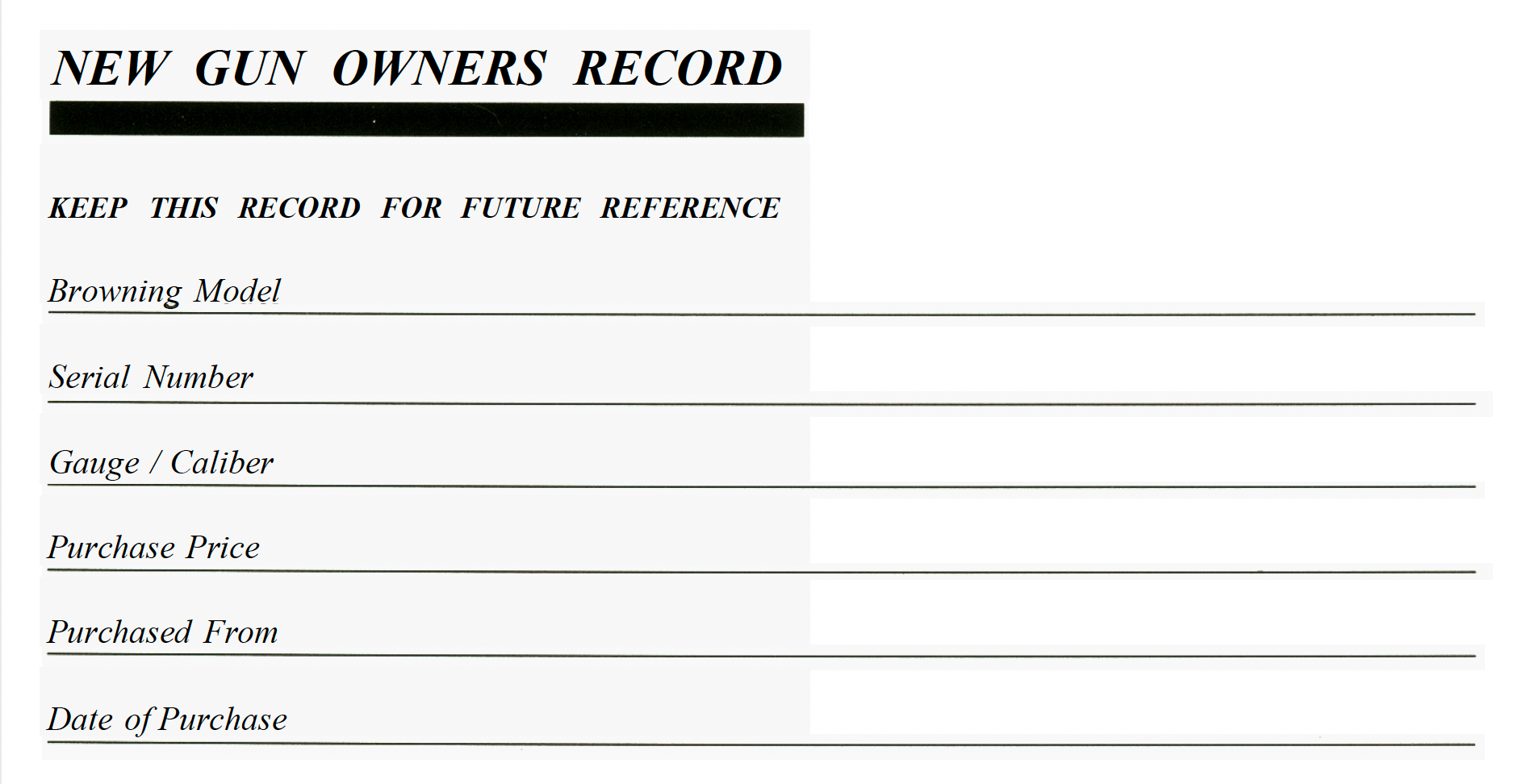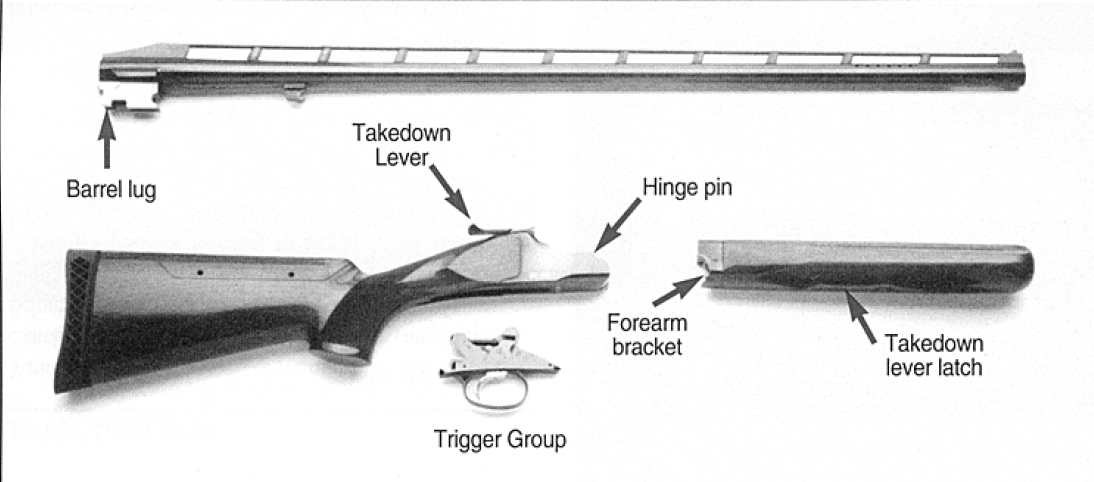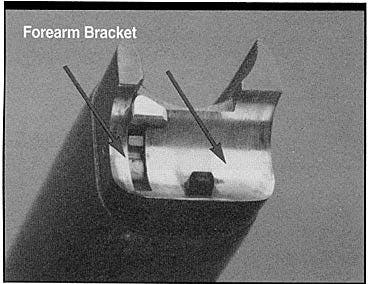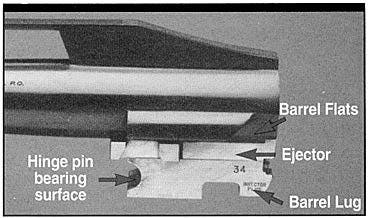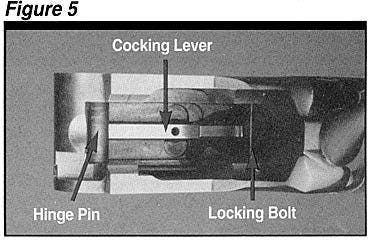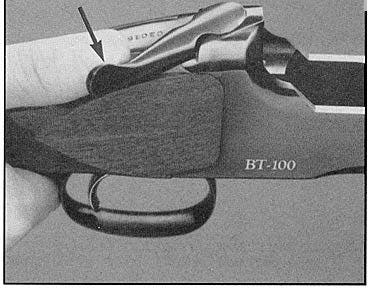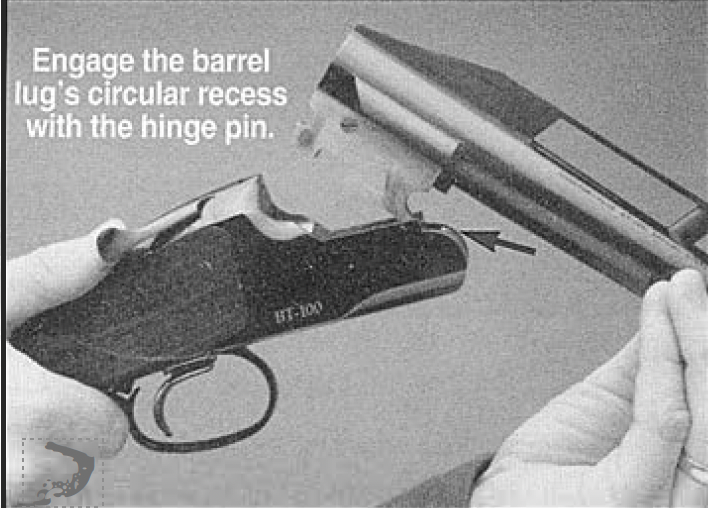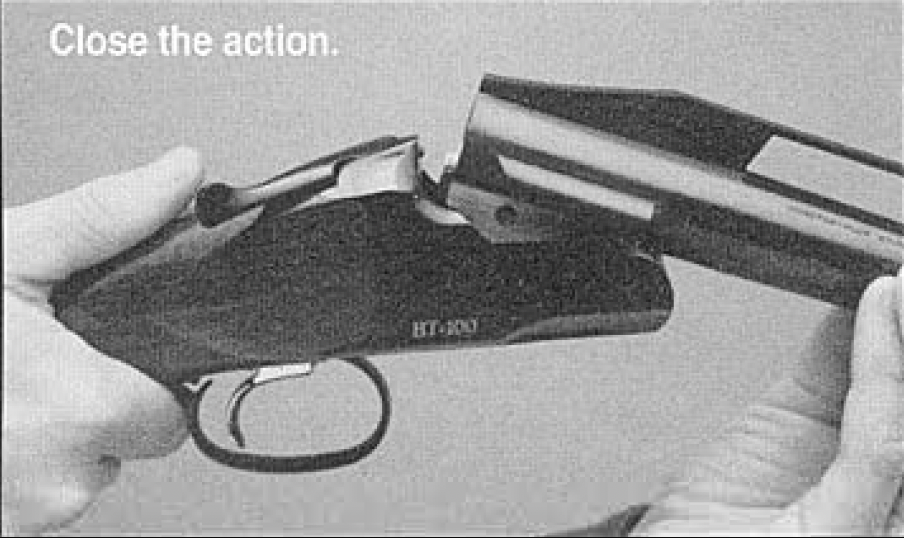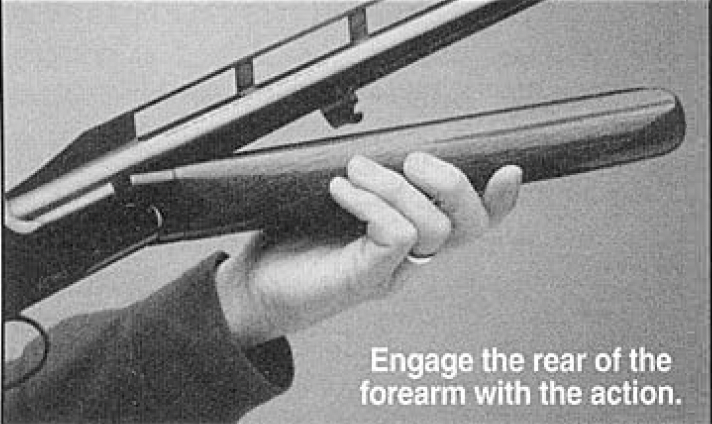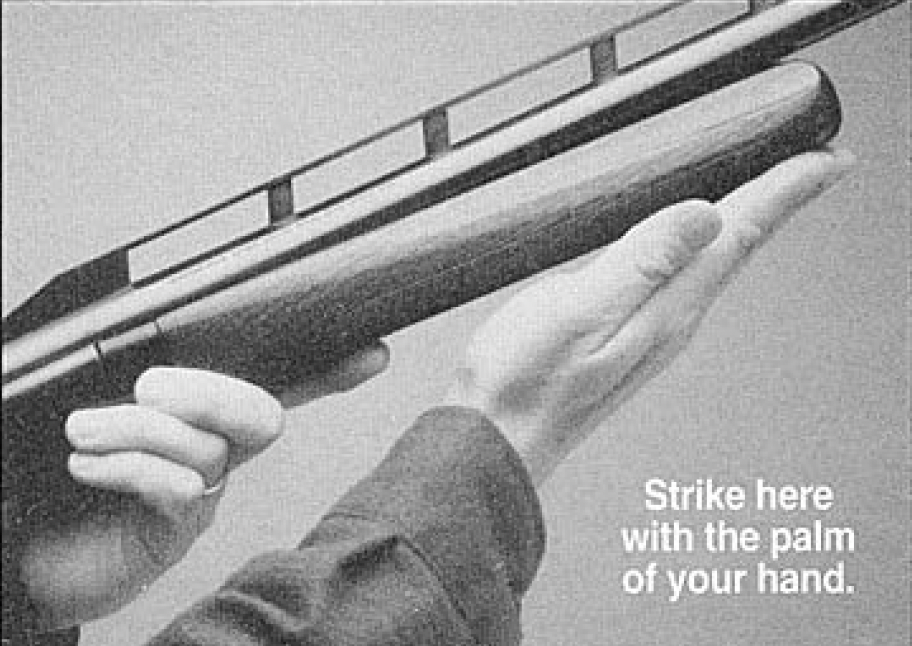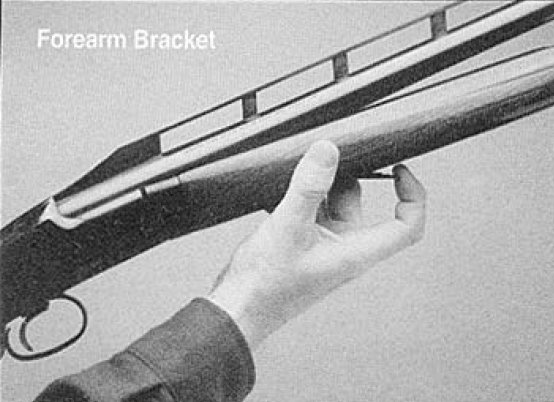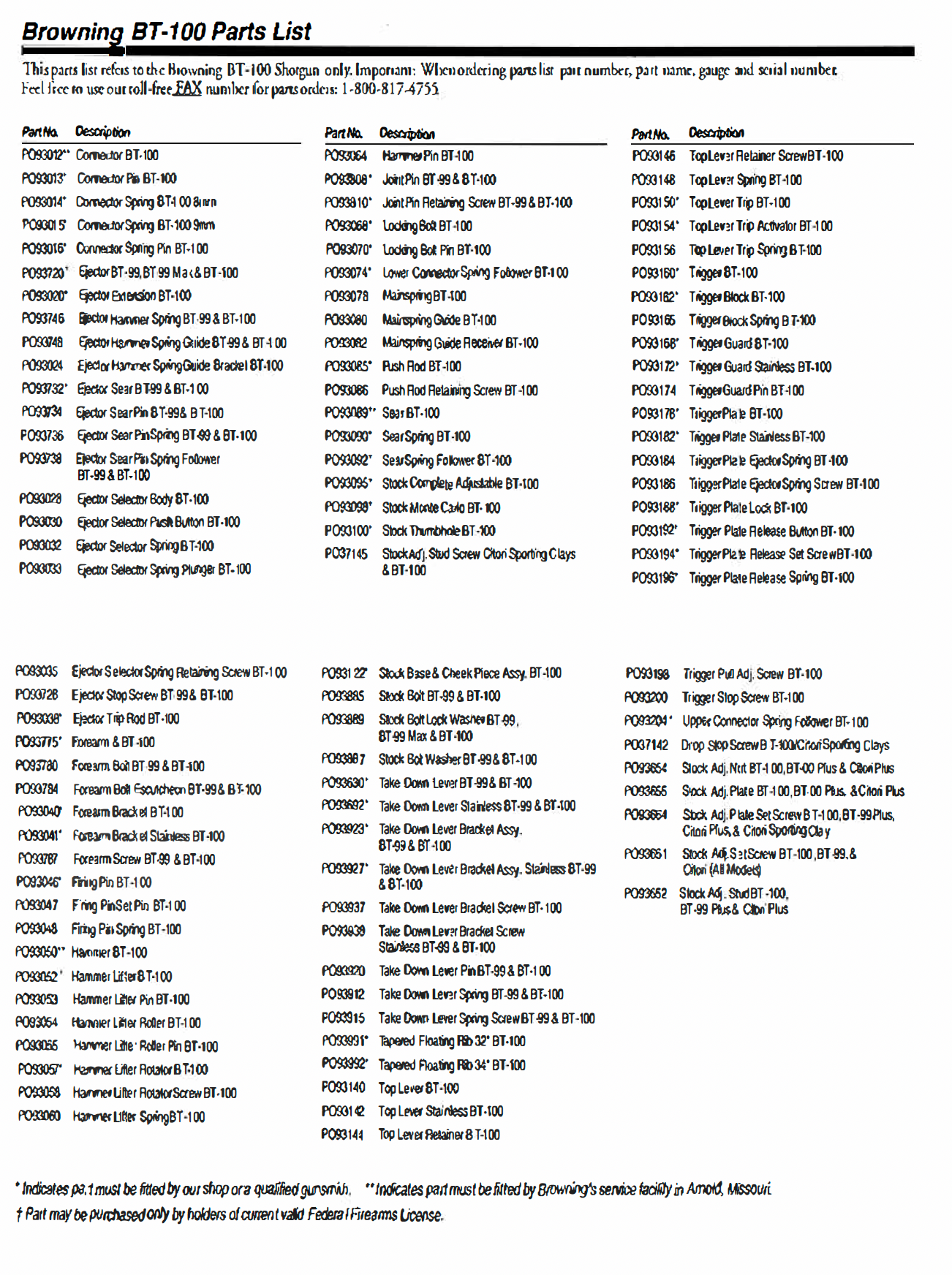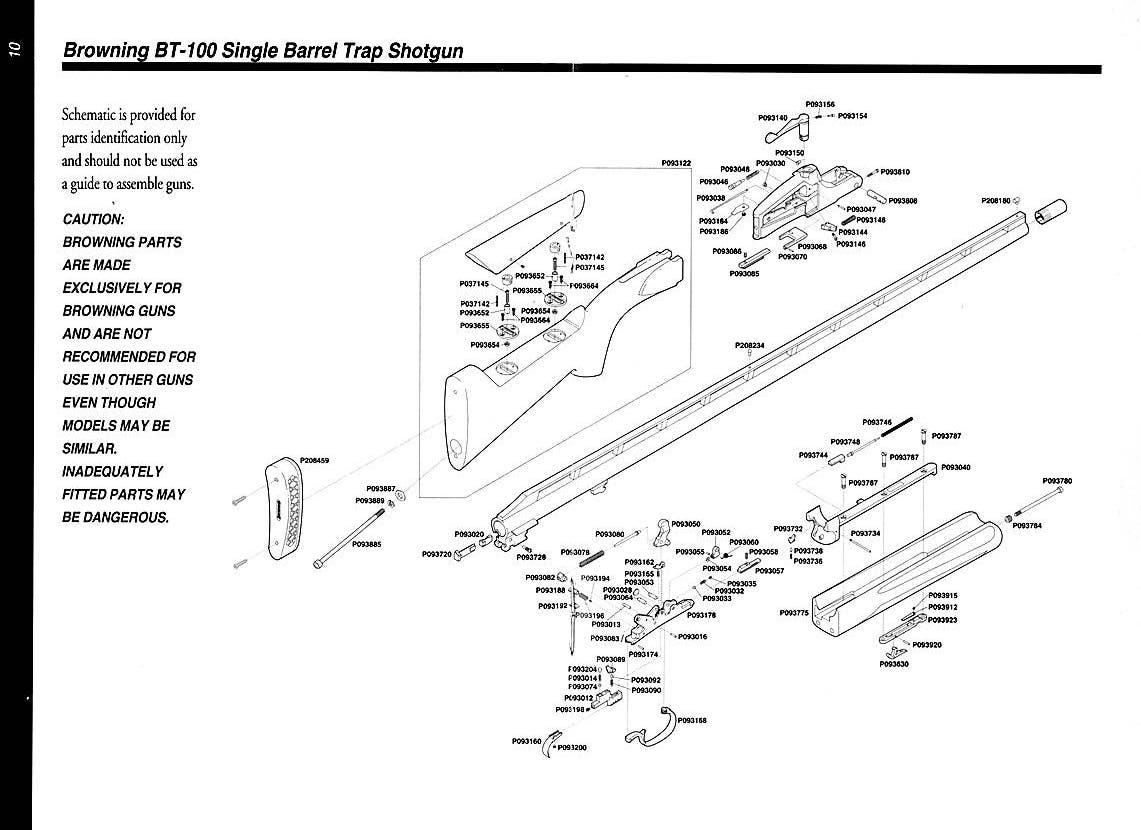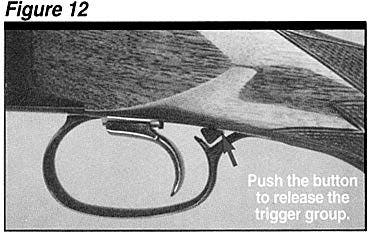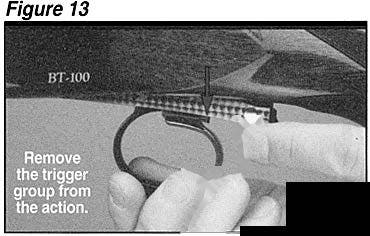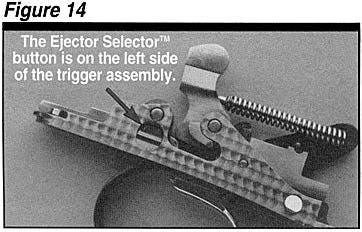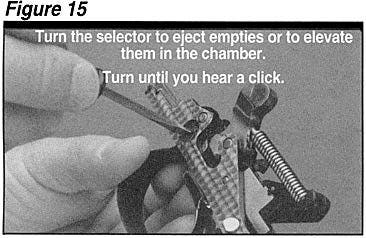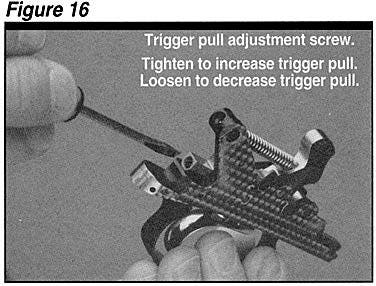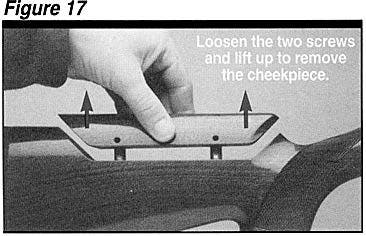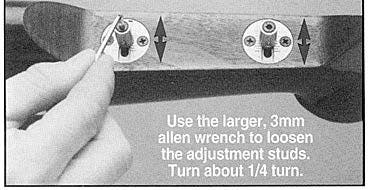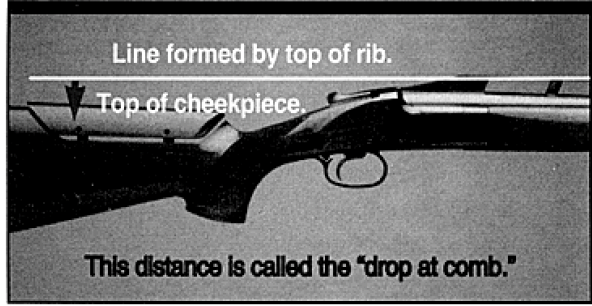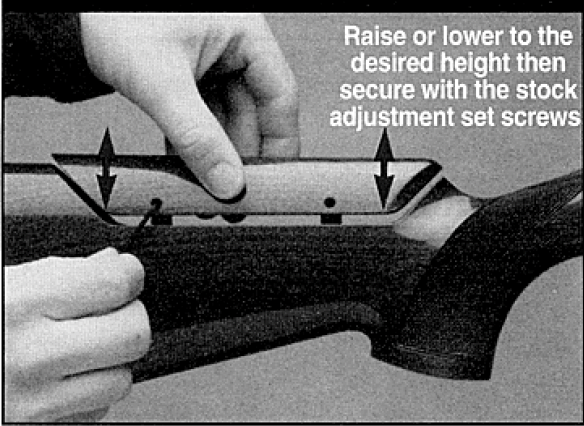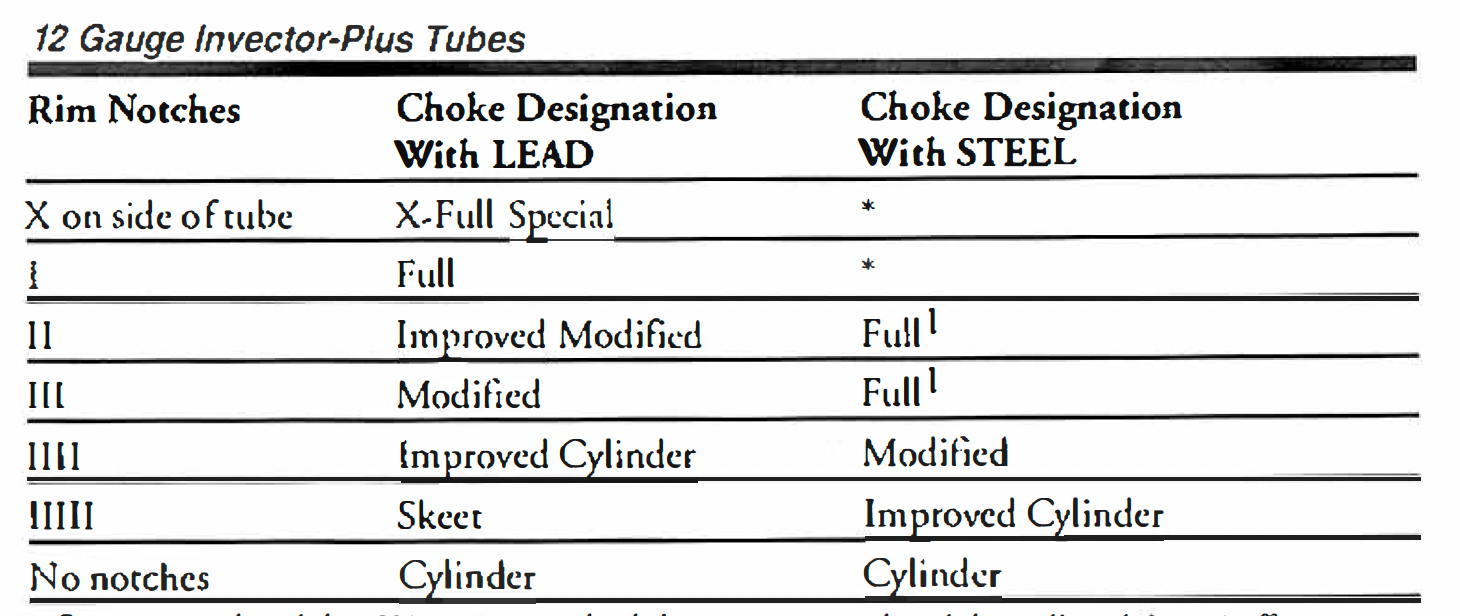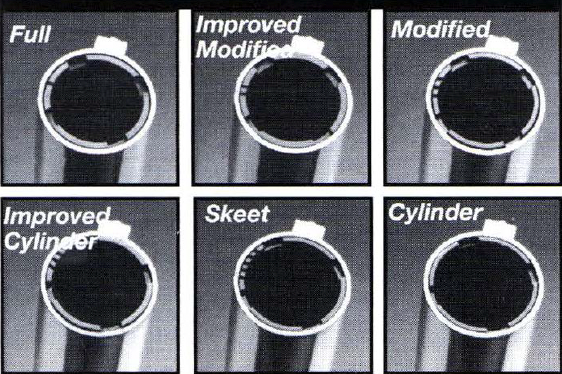BT-100 SINGLE BARREL TRAP SHOTGUN
BT-100 SINGLE BARREL TRAP SHOTGUN
Thank you for choosing a Browning BT-100 shotgun.
Thank you for choosing a Browning BT-100 shotgun.
The BT-I 00 provides you with every advantage you need to shoot and score better at the sport of trapshooting. An easily removable and adjustable trigger group, high post rib, sleek forearm and optional adjustable stock ensure the highest level of shooting performance. Features like the patented Ejecctor-Selector give you a high degree of convenience. From the way the
BT-100 fits snug against your cheek, to the clean, crisp trigger and natural ability to break clays -the BT-100 spells performance. Read this manual carefully to gain the most from your new BT-100.
\Vi1h a reasonable amount of care, your BT-100 should give you many years of dependable, enjoyable shooting. Please feel free 10 write us immediately if you have any observations regarding its performance and operation.
Route One Morgan, Utah 84050
Distributed in Canada by Browning Canada Sports Ltd./Ltee, St-Laurent, Quebec H4S 1 W6
Printed in USA
You Are Responsible for Firearms Safety
As a gun owner, you accept a set of demanding responsibilities. How seriously you take these responsibilities can be the difference between life and death. Mistakes made with guns are final and cannot be paid for with money or regret.
There is no excuse for careless or abusive handling of any firearm. At all times handle your shotgun and any other firearm with intense respect for its power and potential danger.
PLEASE READ AND UNDERSTAND ALL OF THE CAUTIONS, PROPER HANDLING PROCEDURES AND INSTRUCTIONS OUTLINED IN THIS BOOKLET BEFORE USING YOUR NEW FIREARM.
1. ALWAYS KEEP THE MUZZLE OF YOUR SHOTGUN POINTED IN A SAFE DIRECTION even though you are certain the shotgun is unloaded. Never point any firearm at anything you do not intend to shoot. Be extremely alert and aware of all persons and property within the range of your ammunition.
2. CAUTION: THE BT-100 SHOTGUN HAS NO MANUAL SAFETY A trap shooter docs nor load his or her gun until moments before a bird is called for. For this reason, and because 1rapshooting demands intense concentration on shooting technique, no manual safety is provided on your BT-100. There is then no chance for a lost bird by reason of the safety being inadvertently left "on safe."
LOAD YOUR BT-100 TRAP GUN ONLY WHEN SHOOTING IS IMMINENT. ONCE LOADED, THIS GUN IS READY TO FIRE AND SHOULD BE RESPECTED AS SUCH. NEVER TEST THE “SAFETY” WHILE YOUR SHOTGUN IS LOADED OR POINTED IN AN UNSAFE DIRECTION.
3. WHENEVER YOU HANDLE A FIREARM, OR HAND IT TO SOMEONE, ALWAYS OPEN THE ACTION IMMEDIATELY, VISUALLY CHECK YOUR SHOTGUN’S CHAMBER, FEED MECHANISM AND MAGAZINE to be certain that they do not inadvertently contain any ammunition. Always keep the chamber empty and the “safety” in the “on safe” position unless shooting is imminent.
4. DO NOT TRANSPORT YOUR SHOTGUN LOADED, WHETHER IN A SCABBARD GUN CASE, OR OTHER CONTAINER.
5. HUNTING FROM ELEVATED SURFACES SUCH AS TREE STANDS IS DANGEROUS, and may increase the risk of handling a firearm. The following rules should always be observed by you and those you hunt with: Always make certain that the stand being used is safe and stable. Always make certain that your firearm is unloaded when it is being taken up and down from the stand. Always make certain that your firearm is not dropped from the stand, or dropped while it is being taken up or down from the stand. Remember, a loaded firearm may discharge when dropped, even with the safety in the “on safe” position.
6. BEWARE OF BARREL OBSTRUCTIONS, for the safety of both your gun and yourself. Mud, snow, and an infinite variety of other objects may inadvertently lodge in a barrel bore. It takes only one small obstruction to cause dangerously increased pressures that can ruin (swell or rupture) the finest shotgun barrels.
BEFORE CHECKING FOR A BARREL OBSTRUCTION, BE CERTAIN NO LIVE ROUND IS IN THE CHAMBER AND THAT THE MAGAZINE AND FEED MECHANISMS ARE COMPLETELY EMPTY. PLACE THE “SAFETY” IN THE “ON SAFE” POSITION.
After assuring yourself that the shotgun is completely empty, again, open the breechblock, locking it to the rear, and look through the barrel to be sure it is clear of any obstruction. If an obstruction is seen, no matter how small it may be, clean the bore with a cleaning rod and patch as described in “Cleaning and Maintenance Suggestions”.
Before the first firing, clean the bore with a cleaning rod and patch, and wipe away any anti-rust compounds in the action/ chamber areas.
7. ALWAYS UNLOAD YOUR SHOTGUN WHEN NOT IN USE. REFER TO PAGE 28 OF THIS INSTRUCTION BOOKLET EXPLAINING THE UNLOADING OF YOUR SHOTGUN.
As a safety precaution, it is preferable to disassemble your gun for storage. Store your gun and ammunition separately — well beyond the reach of children. Take all safeguards to ensure your shotgun does not become available to untrained, inexperienced or unwelcome hands.
8. USE THE PROPER AMMUNITION. The barrel and action of this shotgun have been made with substantial safety margins over the pressures developed by established American commercial loads. Nevertheless, Browning assumes no liability for incidents which occur through the use of cartridges of nonstandard dimensions which develop pressures in excess of commercially available ammunition which has been loaded in accordance with standards established by SAAMI (Sporting Arms and Ammunition Manufacturers Institute).
9. DO NOT PUT A 20 GAUGE SHELL IN A 12 GAUGE GUN. Store all shells of different gauges in completely separate and well-marked containers. Do not store shells of mixed gauges in a common container or in your pockets. EXAMINE EVERY SHELL YOU PUT IN YOUR GUN.
The most certain way to bulge or rupture a barrel is to drop a 20 gauge shell into a 12 gauge chamber. The 20 gauge shell, unfortunately, will not fall completely through the barrel; its rim is caught by the front of a 12 gauge chamber. Your gun will misfire (with the chamber appearing to be empty). It is then possible to load a 12 gauge shell behind the 20 gauge shell. If the 12 gauge shell is then fired, the result will be a so-called “12-20 burst” which can cause extensive damage to your gun and possible serious injury to you.
10. DO NOT USE 3” SHOTGUN SHELLS IN A BARREL WITH A 2 3/4” CHAMBER. THE SIZE OF THE CHAMBER IS INSCRIBED, ALONG WITH CHOKE DESIGNATIONS, ON THE SIDE OF THE BARREL.
11. DO NOT SNAP THE FIRING PIN ON AN EMPTY CHAMBER — THE CHAMBER MAY NOT BE EMPTY! Treat every gun with the respect due a loaded gun, even though you are certain the gun is unloaded.
12. KEEP YOUR FINGERS AWAY FROM THE TRIGGER WHILE UNLOADING, LOADING or until you are ready to shoot.
13. BE SURE OF YOUR TARGET AND BACKSTOP, particularly during low light periods. Know the range of your ammunition. Never shoot at water or hard objects.
14. ALWAYS UNLOAD YOUR SHOTGUN’S CHAMBER BEFORE CROSSING A FENCE, CLIMBING A TREE, JUMPING A DITCH OR NEGOTIATING OTHER OBSTACLES. Refer to the instructions on the unloading of your shotgun. Never place your shotgun on or against a fence, tree, car, or other similar object.
15. WEAR EYE AND EAR PROTECTION WHEN SHOOTING. Unprotected, repeated exposure to gunfire can cause hearing damage. Wear ear protectors (shooting ear plugs or muffs) to guard against such damage. Wear shooting glasses to protect your eyes from flying particles. Also, wear eye protection when disassembling and cleaning your shotgun to prevent the possibility of springs, spring-tensioned parts, solvents or other agents from contacting your eyes.
16. DROPPING A WADED GUN CAN CAUSE AN ACCIDENTAL DISCHARGE even with the “safety” in the “on safe” position. Be extremely careful while hunting or during any shooting activity, to avoid dropping any firearm.
17. IF YOUR SHOTGUN FAILS TO FIRE, KEEP THE MUZZLE POINTED IN A SAFE DIRECTION. Hold this position for a minimum of 30 seconds. Carefully open the action and remove the cartridge. If the primer is indented, the cartridge should be disposed of in a way that cannot cause harm. If the primer is not indented, your firearm should be examined by a qualified gunsmith and the cause of the malfunction should be corrected before further use.
18. BE DEFENSIVE AND ON GUARD AGAINST UNSAFE GUN HANDLING AROUND YOU AND OTHERS. Don’t be timid when it comes to gun safety. If you observe other shooters violating any of these safety precautions, politely suggest safer handling practices.
19. BE CERTAIN YOUR SHOTGUN IS UNLOADED BEFORE CLEANING. Because so many gun accidents occur when a firearm is being cleaned, special and extreme care should be taken to be sure your gun is unloaded before disassembly, cleaning and reassembly. Keep ammunition away from the cleaning location. Never test the mechanical function of any firearm with live ammunition.
20. EDUCATE AND SUPERVISE FIREARMS SAFETY TO ALL MEMBERS OF YOUR FAMILY — especially to children and non-shooters. Closely supervise newcomers to shooting sports. Encourage enrollment in hunting/shooting safety courses.
21. NEVER DRINK ALCOHOLIC BEVERAGES OR TAKE ANY TYPE OF DRUGS BEFORE OR DURING SHOOTING. Your vision and judgment could be dangerously impaired, making your gun handling unsafe to you and to others.
22. READ AND HEED ALL WARNINGS in this instruction book and on ammunition boxes. It is your responsibility to secure the most up-to-date information on the safe handling procedures for your Browning gun. Browning cannot assume any responsibility when unsafe or improper arms and ammunition combinations are used.
23. PERIODIC MAINTENANCE — AVOID UNAUTHORIZED SERVICING. Your shotgun is a mechanical device which will not last forever, and as such, is subject to wear and requires periodic inspection, adjustment, and service. Browning firearms should be serviced by a Browning Recommended Service Center or by Browning’s service facility in Arnold, Missouri. Browning cannot assume any responsibility for injuries suffered or caused by unauthorized servicing, alterations or modifications of Browning firearms. IT CAN BE VERY DANGEROUS TO ALTER THE TRIGGER, SAFETY OR OTHER FIRING MECHANISM PARTS OF THIS OR ANY OTHER FIREARM.
BE CAREFUL!
Figure 1
Figure 1
Nomenclature
Nomenclature
In conventional gun terminology, the position and movement of gun parts are described as they occur with the gun horizontal and in normal firing position; i.e., the muzzle is forward or front; bun stock is rearward or rear; trigger is downward or underneath; the rib is upward or on top. For general parts nomenclature refer tO Figure I. For specific parts names related to disassembly see Figure 2.
Ammunition
Ammunition
All BT-100 Models are designed t0 shoot and function with 2 3/4" 12 gauge trap loads only. Browning can assume no responsibility for incidents which occur through the use of cartridges of nonstandard dimension or those developing pressures in excess of industry standards established by the Sporting Arms and Ammunition lvlanufacrurcrs' Institute (SAAMI).
CAUTION: DO NOT USE 3" OR 3 1/2" SHOTGUN SHELLS IN ANY SHOTGUN OR BARREL WITH A 2 3/4" CHAMBER. THE SIZE OF THE CHAMBER IS INSCRIBED ALONG WITH GAUGE AND CHOKE DESIGNATION, ON THE SIDE OF THE BARREL.
Serial Number
Serial Number
The serial number of your BT-I00 can be found on the top tang under the top lever. Record this number for future reference.
Initial Cleaning
Initial Cleaning
Various exposed metal parts of your new BT-100 have been coated at the factory with a ruse preventative compound. Before assembling your BT -I 00, clean the anti-rust compound from the inside of the barrel and chamber, and generally wipe clean the metal surfaces at the rear of the forearm, on the barrel lug, and the interior areas of the receiver, as well as any other parts coated with chis compound. Browning Oil is ideal for wiping and cleaning these parts and for giving your gun its first lubrication.
Clean the barrel using a cleaning rod and patch as explained under "Cleaning Suggestions." Read this entire manual before performing the first cleaning, co le-Jrn necessary information on breaking open the action, etc.
Assembly Procedures
Assembly Procedures
BEFORE BEGINNING THE ASSEMBLY PROCESS, ALWAYS MAKE CERTAIN THERE IS NO SHELL IN THE CHAMBER.
1. After wiping the mechanism clean, place one or two drops of a quality oil, like Browning Oil, on the follow• ing surfaces (See Figures 3, 4 and 5):
Figure 3
Figure 3
Figure 4 and 5
Figure 4 and 5
2. To attach the barrel to the action, grasp the stock's pistol grip with your right hand and anchor the butt stock between your right forearm and right side. With the thumb of your right hand, move the top lever sideways to the extreme right (Figure 6).
Figure 6
Figure 6
3. Grasping the barrel in the left hand, engage the barrel lug's circular recess with the action's hinge pin (See Figure 7). Keeping pressure on the barrel to keep the hinge pin aligned in the barrel lug's circular recess, rotate the barrel upward, fully closing the action (See Figure 8).
4. Release the top lever. It should snap back to its central position.
5. Place the butt of the gun's stock against your upper leg to support it. Engage the rear portion of the forearm (forearm bracket) with the action (See Figure 9).
6. Pivot the forearm up to the barrel tightly. This will cause the takedown lever latch to engage onto the barrel. It may be necessary to depress the takedown lever latch. It should be flush with the wood on the underside of the forearm. The forearm and latch can be installed in one motion by positioning the forearm as shown and tapping the forearm's widest part sharply toward the barrel with the heel of your hand (see Figure 10) The takedown lever latch should then automatically lock into position.
Figure 7
Figure 7
Figure 8 and 9
Figure 8 and 9
Figure 10
Figure 10
CAUTION- WHEN ASSEMBLING YOUR BT-100 DO NOT USE UNDUE FORCE IN CLOSING THE ACTION.
If the action and barrel are not properly aligned, undue force will only cause them to grind together and score or mar the finely fitted surface.
If there appears to be interference, start over at Seep 2, being careful to mate and align the barrel lug and the receiver hinge pin properly.
Disassembly Procedures
Disassembly Procedures
Dissembling your BT-I 00 into two parts - the action/buttstock and the barrel/forearm -is ideal for storage or for cleaning and maintenance.
BEFORE BEGINNING ANY DISASSEMBLY PROCEDURES MAKE CERTAIN THERE IS NOT A SHELL IN THE CHAMBER.
1. with the action closed, anchor the buttstock against your upper leg and pull the takedown lever latch outward.
2. At the same time, pivot the forearm away from the barrel (See Figure 11). Set the forearm aside.
3 Break open the action in the usual manner.
Figure 11
Figure 11
4. Carefully disengage the barrel lug from the hinge pin and lift the barrel upward out of the action.
5. Reattach the forearm to the barrels as explained previously, except wich 1he barrels separated from the receiver. This is an ideal and safe way 10 score your shotgun - in n1•0 separate pieces.
No Manual Safety
No Manual Safety
CAUTION: REMEMBER, THE BT-100 SHOTGUN HAS NO MANUAL SAFETY. THE BT-100 IS DESIGNED SOLELY FOR TRAP SHOOTING.
A trap shooter does nor load his or her gun until moments before a bird is called for. For this reason, and because trapshooting demands intense concentration on shooting technique, no manual safety is provided. There is then no chance for a lost bird by reason of the safety being inadvertently left "on safe."
LOAD YOUR BT-100 TRAP GUN ONLY WHEN SHOOTING IS IMMINENT. ONCE LOADED, THIS GUN IS READY TO FIRE AND SHOULD BE RESPECTED AS SUCH.
Always keep the muzzle of your shotgun pointed down range at all times when on the shooting line. When leaving or moving along the line always open the action. Never have the action of your BT-I 00 closed except when you are on the line, ready to shoot, when your gun is cased, or when it is set in a gun rack at the range. When you retrieve your gun from its case or from a gun rack, always immediately open the action and check to assure that no shell is in the chamber.
ALWAYS KEEP THE MUZZLE OF YOUR BT-100 POINTED IN A SAFE DIRECTION.
FAILURE TO FOLLOW THE ABOVE INSTRUCTIONS COULD RESULT IN INJURY OR DEATH TO YOURSELF OR OTHERS.
General Operating Procedures
General Operating Procedures
Highly skilled techniques of hand-fitting and polishing have been used to accomplish 1he hairline fining of metal parts on this gun. ll1ese pains1aking operations are necessary to prevent looseness, even after long use. You may consider your new gun to be slightly stiff This close fitting, however, assures you of long lasting dependability.
OPERATION OF THE TOP LEVER
The top lever operates the locking bolt, which is very closely hand-fitted to its barrel lugs. Provision is made for the gradual wear of locking surfaces by allowing a slight excess of metal. This exacting meral allowance keeps the breech of 1he gun tight for many years.
Upon closing your gun, let the top lever snap into position - do not retard its action with your thumb. If closed in this manner, the top lever spring will remain the top lever mechanism 10 the locked position. le is not necessary that the top ever ren1rn to a completely central position; in fact, it usually will not do so in a new gun. Many experienced shooters cultivate the habit of lightly pushing the top lever to the left after the gun is closed. lt becomes automatic and is a quick method of assuring yourself char foreign matter has not interfered with the complete closure of the breech.
The breech is so tightly hand-fitted that foreign matter, sand, etc. may prohibit complete closing.
IF THE BREECH WILL NOT CLOSE COMPLETELY, UNDER NO CIRCUMSTANCES SHOULD YOU ATTEMPT TO FIRE.
Break the gun and unload it. Carefully examine the breech surfaces, and remove the foreign matter. Remember 10 always keep the polished breech surfaces dean and lightly oiled.
LOADING-
CAUTION: REMEMBER, THE BT-100 SHOTGUN HAS NO MANUAL SAFETY. LOAD YOUR BT-100 TRAP GUN ONLY WHEN SHOOTING JS IMMINENT. ONCE LOADED, THIS GUN IS READY TO FIRE AND SHOULD BE RESPECTED AS SUCH. AT ALL TIMES DURING THE LOADING AND UNLOADING PROCEDURES BE SURE YOUR MUZZLE IS POINTING DOWN RANGE, IN A SAFE DIRECTION.
1. Break the action as explained above.
2. Insert a shell fully into the chamber.
3 Close the ac1ion by pulling up on the forearm. The lever will snap back to the center when properly dosed. Remember, keep your finger away from the trigger until you are ready to shoot.
UNLOADING-
1. Open the action by pushing the top lever to the right, as explained previously.
2. Pull down on the forearm. The BT-I00 has a special Ejeccor-SdeciorTM system that allows you to set your mode of ejection. Instructions on setting the mode are detailed below.
FIRING YOUR BT-100
With the chamber loaded, and the action dosed, the BT-100 is fired by simply pulling the trigger. Never pull the trigger unless the muzzle is pointed down range, at the day target. Make sure people-other shooters, spectators, trap operators-are not down range. If there is any doub1 about down range safety, open the action immediately and remove the shell until you are certain all conditions are safe.
Removable Trigger Assembly
Removable Trigger Assembly
Your BT-I00 features a removable trigger assembly that allows you to make two adjustments: (1) selecting the ejection mode and (2) setting the amount of trigger pull. To do either adjustment you must first remove the assembly.
REMOVING THE TRIGGER ASSEMBLY
MAKE CERTAIN THERE IS NOT A SHELL IN THE CHAMBER.
1. Locate the triangular-shaped button on the left side of the receiver, directly behind the trigger.
2 Push this button in to the right and hold the button in while at the same time pulling down on the trigger guard. This will remove the assembly out of the action (See Figures 12 and 13).
3. Reinstallation is the reverse. With your gun still unloaded, start the trigger assembly in front first and angle it upward until the back end clicks into position - engaging the release mechanism. It is not necessary to push in on the triangular-shaped button to reinstall the assembly.
EJECTOR-SELECTORTM
The patented Ejector-Selector feature of the BT-100 allows you to select whether you want fired shells to be (1) ejected clear of the shotgun or (2) elevated in the chamber for easy removal. In either case, an unfired shell will be conveniently elevated slightly our of the chamber for easy removal with your fingers.
Figure 14 and 15
Figure 14 and 15
1. To adjust the Ejector-SelectorTM you must first remove the trigger assembly as explained previously.
2. The Ejector-SelcccorTM is the round, screw-like part on the left side of the trigger assembly (See Figure 14).
3. The Ejector-SelectorTM is pre-set at the factory to eject fired shells. The selector switch has a groove in the middle (like a screw head) with a flat surface on one side and an indented surface on the other. With the switch set with the flat surface up, your BT-I00 will elevate empties in the chamber for easy removal. With the indented surface up, empties will be ejected clear of the gun. To change the setting of the Ejector-SelectorTM simply rake a dime or screwdriver and turn the Ejector SelectorTM 180°, either clockwise or counterclockwise until you hear a click (See Figure 15).
When collecting ejected empty shells, simply brace the buttstock between your torso and forearm, and, after unlocking the action, cup your hand over the chamber before the action fully breaks open and the shell ejects. The shell will pop up into your hand. If you will be ejecting shells onto the ground it is important to point the chamber by slightly canting the shotgun to the right (left for left-handed shooters)-so the shell ejects clear of your body and face.
Remember, never have the action of your BT-I00 closed except when you are on the line ready to shoot, when your gun is cased, or when it is set in a gun rack at the range. It is a courtesy to other shooters, and a wise safety practice, to keep your action open at all other times.
ADJUSTING THE TRIGGER PULL
Trigger pull on your BT-I00 is adjustable from approximately 3 1/2 to 5 1/2 lbs.
1. To adjust the trigger pull you must first remove the trigger group following the directions outlined previously.
2. With the trigger assembly removed, locate the trigger pull adjustment screw in the rear of the trigger group (See Figure I6).
3. To increase the amount of trigger pull needed to fire your BT-I 00, tighten or turn the screw clockwise. When fully tightened, trigger pull is approximately 5 1/2 lbs. To lessen the trigger pull needed to fire your gun, loosen or turn the screw counrerclock·wise. With the trigger pull adjustment screw fully loosened, trigger pull is approximately 3 1/2 lbs. Should the trigger pull adjustment screw become loosened to the point it falls out of the trigger assembly, trigger pull still remains approximately 3 1/2 lbs. Reinstall the trigger assembly as explained earlier.
Figure 18
Figure 18
WARNING
NEVER TAMPER WITH THE TRIGGER PULL ADJUSTMENT MECHANISM IN ORDER TO ALTER THE MINI MUM SETTING OF THIS OR ANY OTHER FIREARM'S TRIGGER PULL.
Optional Adjustable Comb
Optional Adjustable Comb
This section applies only if your BT-100 is fined with the optional, adjustable comb feature. Otherwise, You may skip these instructions.
Adjustment of the comb allows you to achieve a perfect fit of the stock against your face. This is a crucial adjustment because it determines how correctly and consistently your eye will line up with the sight plane along the rib.
ADJUSTING CAST ON AND CAST OFF -
A BT-I00 correctly adjusted for cast on and cast off will have you looking directly down the center of the rib with the front and middle beads in alignment. To adjust cast on and cast off, perform the following:
BEFORE PERFORMING ANY ADJUSTMENTS ALWAYS MAKE CERTAIN THERE IS NO SHELL IN THE CHAMBER.
1. Loosen the two stock adjustment set screws on the right side of the removable cheek piece and remove the check piece by lifting upward (See Figure 17). This exposes the Cast On and Cast Off adjustment mechanism. The cheek piece comes set from the factory with case in the center position.
2. Loosen both of the stock adjustment stud screws located in the top of the stock adjustment studs using the larger (3mm) alien wrench provided (See Figure 18). It takes about 1/4" turn to loosen them adequately.
3. Slide each stud equally in the desired direction. Each mark indicates 1/16".
4. Move the studs to the right for Cast Off.
5. Move the studs to the left for Case On.
6. Right-handed shooters may desire some Cast Off, with left-handed shooters preferring some Cast On. The 1ern1inology is the same for right or left-handed shooters. The net effect is to move the check piece to allow the face to move farther over the stock for better eye-to-rib alignment.
7. When properly set, the front and rear sight beads should line up perfectly each time you shoulder your shotgun.
8. Tighten the stock adjustment and screws. Be careful not to over-tighten.
9. Replace the cheek piece onto the studs. If drop at comb has already been set to your desired height, tighten the two stock adjustment set screws seC11rely. If drop has not been set, leave the set screws loose and proceed to "Adjusting Drop at Comb".
Figure 19
Figure 19
Figure 20
Figure 20
ADJUSTING DROP AT COMB -
Adjusting the drop at the comb allows you to align your eye perfectly with the plane of the rib. A correct sight picture for most shooters should have you looking down the rib with the bottom of the front bead resting on the top of the middle bead. This forms a "figure eight" or "stacked" configuration. Some of the rib will be showing as you look down the rib, but no rib should show between the beads. For shooting consistency, it is critical that you line up correctly each time you shoot. The drop measurement is determined by measuring the distance between the plane formed by the top of the rib and the top of the cheek piece itself (See Figure 19). When you raise the cheek piece you reduce the amount of drop. A greater amount of drop is obtained by lowering the cheek piece. To sec drop at comb perform the following:
BEFORE PERFORMING ANY ADJUSTMENTS, ALWAYS MAKE CERTAIN THERE IS NO SHELL IN THE CHAMBER.
1. Loosen the two stock adjustment set screws on the right side of the check piece (if they were not left loose after setting the case). The cheek piece will now move freely, up and down on the stock adjustment studs. Downward travel of the cheek piece is limited by how far two drop stop screws have been extended. The drop stop screws are two small screws on the underside of the cheek piece (one near each adjustment stud hole in the bottom of the check piece). They prevent the cheek piece from inadvertently dropping lower than the desired setting (out of adjustment) even if the stock adjustment sec screws become loose.
2. Turn the drop stop screws up into the check piece if not already screwed in.
3. Slide the cheek piece to the desired height (See Figure 20) and lightly tighten the stock adjustment set screws. Shoulder the gun as you would on the shooting range. The correct sight picture should have the bottom of the front bead resting on the top of the middle bead. DROP ADJUSTMENTS ARE A MATTER OF TRIAL AND ERROR. Repeat the adjustment a little at a time until you obtain the desired sight picture on the rib.
4. Measure the gap between the stock and the cheek piece.
5. Remove the cheek piece and screw the drop stop screws down until they limit how far the cheek piece can be lowered at exactly the drop measurement you desire.
6. Tighten the stock adjustment screws (on the right side of the cheek piece).
It is possible to adjust the rear setting of the cheek piece slightly higher than the front setting to obtain a more negative drop setting.
Barrel Porting
Barrel porting is the pattern of drilled holes in the cop of the barrel. Barrel porting is desired by some shooters for the tendency to reduce barrel jump and give a feeling of lower recoil against the face. Barrel porting requires only an occasional cleaning as described under "Cleaning Suggestions" later in this manual.
Back-Bored Barrels
The BT-I00 utilizes a back-bored barrel on all models. "Back-bore" is a term for a shotgun barrel that has a larger bore than the minimum specified for that gauge by the Sporting Arms and Ammunition Manufacturers' Institute (SAAMI). Your BT-100's barrel is back-bored bur falls within the maximum allowable diameter specifications set by SAAMI for 12 gauge barrels.
lnvector-Plus Choke Tube System
BT-100 shotguns feature the lnvector-Plus choke cube system. The lnvector-Plus system is a screw in choke tube system with interchangeable cubes. You can confirm this by reading the inscription on the right side of the barrel.
The words INVECTOR-PLUS mean your shotgun uses the lnvector-Plus choke cube system designed for use in Browning 12 gauge shotguns with back-bored barrels. The extra length, combined with special cube capers, gives the finest possible patterns for target shooters. Plus, you have choke switching convenience. lnvector Tubes are fully steel and lead shot compatible. A special "Plus" choke tube wrench is provided to remove and tighten these tubes.
CAUTION: INVECTOR-PLUS TUBES ARE FOR USE IN BROWNING SHOTGUNS WITH BROWNING BACK-BORED BARRELS ONLY, AND ARE NOT INTERCHANGEABLE WITH REGULAR 12 GAUGE INVECTOR CHOKE TUBES. DO NOT USE INVECTOR PLUS TUBES IN BARRELS THREADED FOR STANDARD INVECTOR TUBES. DO NOT USE STANDARD INVECTOR TUBES IN BARRELS THREADED FOR INVECTOR PLUS TUBES. FAILURE TO FOLLOW THESE WARNINGS MAY CAUSE DAMAGE TO YOUR GUN AND CAUSE INJURY TO YOURSELF AND OTHERS.
DO NOT FIRE THIS SHOTGUN WITHOUT HAVING AN INVECTOR-PLUS CHOKE TUBE INSTALLED. PERMANENT DAMAGE MAY RESULT TO THE THREADS.
DO NOT USE BROWNING INVECTOR-PLUS CHOKE TUBES IN ANY SHOTGUN BARRELS NOT SUPPLIED BY BROWNING. ALSO, DO NOT USE ANY OTHER CHOKING DEVICE IN ANY SHOTGUN BARRELS SUPPLIED BY BROWNING. USE ONLY THE APPROPRIATE GAUGE AND TYPE OF CHOKE TUBES MARKED INVECTOR-PLUS.
CAUTION: WHENEVER HANDLING ANY SHOTGUN FOR THE PURPOSE OF REMOVING OR INSTALLING A CHOKING DEVICE, MAKE ABSOLUTELY CERTAIN THE GUN IS FULLY UNLOADED, AND THE ACTION IS BROKEN OPEN! NEVER ATTEMPT TO REMOVE OR INSTALL A SHOTGUN CHOKING DEVICE ON A LOADED FIREARM!
* Do not use steel shot. Using an over-tight choke constriction with result in an ineffective "blown" pattern.
1 When more than one choke designation is listed for a given steel shot pattern, use the more open choke listed for high velocity, larger shot size steel shot wads.
Figure 21
Figure 21
TUBE REMOVAL-
1. Fully unload your BT-100. ALWAYS UNLOAD YOUR SHOTGUN FULLY. INSPECT THE CHAMBER TO MAKE SURE IT DOES NOT CONTAIN ANY SHELLS.
2. Open the action using the top lever as explained previously.
3. Use the Invector wrench to loosen the tube, turning it counterclockwise. Finger twist the tube the rest of the way out of the barrel.
TUBE INSTALLATION-
1. Fully unload your BT-100.
ALWAYS UNLOAD YOUR BT-100-FULLY. INSPECT THE CHAMBER TO MAKE SURE IT DOES NOT CONTAIN ANY SHELLS.
2. Open the action.
3. Before installing a tube, check the internal choke tube threads in the muzzle, as well as the threads on the Invector choke tube to be sure they are clean. Lightly oil the threads with an oil like Browning Oil.
4. Using your fingers, screw the appropriate tube into the muzzle end of the barrel, tapered end first, notched end outward. When it becomes finger-tight, use the Invector choke tube·wrench to firmly seat the tube.
THE INVECTOR CHOKE TUBE SHOULD BE PERIODICALLY CHECKED TO ASSURE THAT IT IS TIGHT AND FIRMLY SEATED. BEFORE CHECKING, FOLLOW THE SAFETY GUIDELINES OUTLINED ABOVE.
Replacement and additional tubes and wrenches are available from your Browning dealer, or by writing to:
Browning Consumer Department,
One Browning Place, Morgan, Utah 84050. (801) 876-2711.
Canadian customers please call or write to:
Browning Canada Sports Ltd./Ltee,
5617 Chemin St-Francois, St-Laurent,
Quebec, CanadaH4S 1W6.
(514) 333-7261.
INVECTOR CHOKE TUBE CODE
To identify individual Invector tubes, refer to the abbreviated indications on the side of the tube, or use the identification mark(s) located on the top rim of each tube. (See Figure 14).
SELECTING THE CORRECT INVECTOR CHOKE TUBE-
Although your BT-100 is designed solely for target use with lead shot loads, the Invector choke system is fully compatible with fuctOf)' steel shot loads as well. For your information only, on the chart above we have included seed shot information in addition to the lead shot choke/pattern specifications you will need. Both lead and steel designations have proven necessary)' for hunters using other Browning guns with Standard lnvector and lnvector-Plus cubes because in any given cube, steel shot gives a different pattern than lead shot. In fact, even larger steel shot diameters result in different patterns than smaller steel shot sizes. Each designation is inscribed on each choke tube. Remember, you will only need to refer to the lead shot designations when selecting a proper cube for your BT-100, as your new shotgun is unsuitable for any hunting use.
Cleaning Suggestions
The BT-100 is a target gun, and as such will function better and more reliably over a longer period of time if it is properly maintained and kept clean.
BEFORE PERFORMING ANY CLEANING PROCEDURES, ALWAYS MAKE CERTAIN THERE IS NO SHELL IN THE CHAMBER.
You should clean your BT -100 alter every day of shooting, and more often if it becomes excessively dirty. A minimum cleaning includes wiping down the action and oiling key parts. Most regular maintenance will also include cleaning the barrel. If you encounter a function problem (tight action when closing, etc.) be sure to give your gun a thorough cleaning, to see if it solves the problem, before seeking the services of a Browning Recommended Service Center or the Browning Service Facility in Arnold, Missouri, or a competent gunsmith.
A light cleaning means oiling and wiping down. le can be accomplished with the barrel still attached. A full cleaning requires that you remove the barrel and forearm. To clean your firearm follow the general outline below:
CLEANING PROCEDURES -
BE CERTAIN YOUR GUN'S CHAMBER IS UNLOADED. ALWAYS WEAR PROTECTIVE SAFETY GLASSES DURING ALL ASSEMBLY, DISASSEMBLY, AND CLEANING PROCEDURES. KEEP AMMUNITION AWAY FROM THE CLEANING AREA. DO NOT TEST THE FUNCTION OF YOUR FIREARM WITH LIVE AMMUNITION.
1. Remove the barrel and forearm from the receiver as explained previously.
2. Using a shotgun cleaning rod, with tip and patch large enough for a snug fit in the bore, insert the rod and a lightly oiled parch in the breech end of the barrel and back and forth several times.
3. Inspect the bore from both ends for leading and plastic residue. Plastic residue is often left in the bore from the shot cups in modern shotshells. Leading and plastic residue will appear as longitudinal streaks and are usually more predominant near the muzzle and just forward of the chamber. A normal amount of either is common and is not serious.
4. If leading or plastic residue seems excessive you can remove it by brushing the bore with a brass brush. Soak the bn1sh or spray the bore with powder solvent first. Scrub until clean. To prevent bristles from breaking off, push the brush fully through e-Jch time before pulling it back through.
5. If your shotgun has barrel pores, carefully clean them with a rag soaked in powder solvent. You may need to scrape residues from the holes with something like a small screwdriver, pipe cleaner or small brush. If so, be careful not to mar the blueing on the barrel's outer surface, or scratch the inside of the barrel.
6. After all leading and residues have been removed run a clean dry patch through the bore. Follow this with a final, lightly oiled patch.
7. Wipe all metal surfaces of the receiver, forearm and barrel with clean rag. Then lightly oil your gun at the points described in step 1 under "Assembly Procedures." Regular, light oiling is extremely important to the durability and reliable operation of your shotgun.
8. INSPECT THE BARREL AND CHAMBER TO BE CERTAIN NO PATCHES HAVE INADVERTENTLY BEEN LEFT IN THEM. REMOVE ANY THAT REMAIN.
9. Wipe all wood surfaces with Browning Oil or a quality furniture polish, but not both.
OTHER CLEANING SUGGESTIONS -
Never pour large quantities of oil into the receiver or ocher pares. le can drain down to the wood and soften it - and cause permanent damage and loosening of the stock.
le is very important that the chamber of your shotgun be deaned thoroughly and promptly after shooting plastic shotshells. DO NOT LEAVE A DISCHARGED (EMPTY) SHELL IN THE CHAMBER FOR ANY LENGTH OF T1ME.
The chemical composition of many plastic shells contains moisture which can "sweat" out of the shell and onto the chamber surface, and possibly cause corrosion and rust.
NEVER ATTEMPT TO TAKE YOUR BT-100 APART FURTHER THAN EXPLAINED IN THIS MANUAL
This is a specialized, finely fitted mechanism. You may permanently mar it by attempting to disassemble the inner mechanism assemblies. If further disassembly for service or cleaning is required, take your gun to a Browning recommended Service Center or a competent gunsmith, or send it 10 our Arnold, Missouri Service Facility as explained under "Service or Repair."
Service or Repair
Service or Repair
If your A-500G should require service or repairs, we suggest you first contact a local recommended Browning Firearms Service Center. Your Browning Sporting Goods dealer can tell you the address of the Service Center nearest you, or you may call or write our Consumer Information Department in Morgan, Utah (801) 876-2711. Otherwise, you may return your shotgun to our own repair facility for servicing. The address is:
Browning Service Department
3005 Arnold Tenbrook Road
Arnold, Missouri 6301 0-9406
Phone: 1-800-322-4626
Canadian Customers call or write:
Browning Canada Sports Ltd./Ltee,
3167 De Miniac, St-Laurent, Quebec H4S 1S0
(514) 333-7261
When returning your firearm for servicing, you must do the following:
a. Be sure it is completely unloaded.
b. Package it securely in a cardboard container.
c. Enclose a letter with your firearm that clearly describes the trouble experienced and the repairs or alterations desired.
d. If convenient, send a copy of the letter to us separately.
e. Never return ammunition with your firearm. It is against postal and most commerce regulations.
If you have any questions about this manual or about any other Browning products, call or write our Consumer Information Department:
Browning Consumer Information Morgan, Utah 84050
Phone: (801) 876-2711
You Are Responsible For Firearms Safety.
As a gun owner, you accept a set of demanding responsibilities. How seriously you take these responsibilities can mean the difference between life and death. Failure to follow any of these instructions can cause extensive damage to your gun and/or possible serious injury or death to yourself and others. There is no excuse for careless or abusive handling of any firearm. At all times handle any firearm with intense respect for its power and potential danger. READ AND UNDERSTAND all of THE CAUTIONS AND PROPER HANDLING PROCEDURES OUTLINED IN THIS BOOKLET BEFORE USING YOUR NEW FIREARM.
1. ALWAYS KEEP THE MUZZLE OF ANY FIREARM POINTED IN A SAFE DIRECTION.
Do this even though you are certain the firearm is unloaded. Never point any firearm at anything you do not intend to shoot. Be extremely alert and aware of all persons and property within the range of your ammunition.
2. NEVER RELY TOTALLY ON YOUR SHOTGUN'S MECHANICAL "SAFETY" DEVICE.
Always assume that your gun can be fired at any time, even with all the safety mechanism engaged. The word "safety" describes a gun's trigger block mechanism, sear block mechanism, hammer block mechanism or firing pin block mechanism. These mechanical devices are designed to place your gun in a SAFER status. No guarantee can be made that the gun will not fire even if the "safety" is in the "on safe" position. See "Operation of the Safety" in your owner’s manual for instructions on operation of your gun's "safety."
3. LIKE ANY MECHANICAL DEVICE, A "SAFETY" CAN SOMETIMES FAIL; IT CAN BE JARRED OR INADVERTENTLY MANIPULATED INTO AN UNSAFE CONDITION.
Mechanical "safeties" merely aid safe gun handling and are no excuse for pointing your shotgun's muzzle in an unsafe direction.
While it is a good idea to "test" your shotgun's mechanical "safeties" periodically for proper function, never test them while your firearm is loaded or pointed in an unsafe direction. Safe gun handling does not stop with your gun's mechanical "safety" devices -- it starts there. Always treat this shotgun with the respect a loaded, ready-to-fire firearm. NEVER TEST THE MECHANISM OF ANY FIREARM WHILE IT IS LOADED OR POINTED IN AN UNSAFE DIRECTION.
4. WHENEVER YOU HANDLE A FIREARM, OR HAND IT TO SOMEONE MAKE SURE IT IS COMPLETELY UNLOADED.
Always open the action immediately and visually check the chamber magazine. Make certain the chamber does not inadvertently contain any ammunition. Always keep the chamber empty and the "safety" in the "on safe" position unless shooting is imminent.
5. DO NOT TRANSPORT ANY FIREARM LOADED. KEEP ALL FIREARMS UNLOADED DURING TRANSPORT, WHETHER IN A SCABBARD, GUN CASE, OR OTHER CONTAINER.
6. HUNTING FROM ELEVATED SURFACES SUCH AS TREE STANDS IS DANGEROUS.
Doing so may increase the risk of handling a firearm. The following rules should always be observed by you and those you hunt with: Always make certain that the stand being used is safe and stable. Always make certain that your firearm is unloaded when it is being taken up and down from the stand. Always make certain that your firearm is not dropped from the stand, or dropped while it is being taken up or down from the stand. Remember, a loaded firearm may discharge when dropped, even with the safety in the "on safe" position.
7. BEWARE OF BARREL OBSTRUCTION.
Do this for the safety of both your gun and yourself. Mud, snow, and an infinite variety of other objects may inadvertently lodge in a barrel bore. It takes only one small obstruction to cause dangerously increased pressures that can ruin (swell or rupture) the finest shotgun barrel. BEFORE CHECKING FOR A BARREL OBSTRUCTION, BE CERTAIN YOUR FIREARM IS FULLY UNLOADED.
Make sure no live rounds are in the chamber. Place the safety in the "on safe" position, open the breech or action and look through the barrel to be sure it is clear of any obstruction. If an obstruction is seen, no matter how small it may be, clean the bore with a cleaning rod and patch as instructed for your particular firearm. Before the first firing, clean the bore with a cleaning rod and patch, and wipe away any anti-rust compounds in the action/chamber areas.
8. ALWAYS UNLOAD ALL FIREARMS WHEN NOT IN USE.
As a safety precaution, it is preferable to disassemble your gun for storage. Your responsibilities do not end when your firearm is unattended. Store your gun and ammunition separately -- well beyond the reach of children. Take all safeguards to ensure your firearm does not become available to untrained, inexperienced or unwelcome hands.
9. USE THE PROPER AMMUNITION.
The barrel and action of all Browning firearms have been made with substantial safety margins over the pressures developed by established American commercial loads. Nevertheless, Browning assumes no liability for incidents which occur through the use of cartridges of nonstandard dimensions which develop pressures in excess of commercially available ammunition with standards established by the Sporting Arms and Ammunitions Manufacturers' Institute (SAAMI). BE ALERT TO THE SIGNS OF AMMUNITION MALFUNCTION. If you detect an off sound or light recoil when ammunition is fired, DO NOT LOAD MORE AMMUNITION INTO THE CHAMBER. Open the action and remove all ammunition from the chamber. With the action open, glance down the barrel to make sure that a wad or other obstruction does not remain in the barrel. If there is an obstruction, completely clear the barrel before loading and firing again. Failure to follow these instructions can cause extensive damage to your gun and possible serious injury to yourself and others.
10. MAKE SURE OF ADEQUATE VENTILATION IN THE AREA THAT YOU DISCHARGE A FIREARM. WASH HANDS THOROUGHLY AFTER EXPOSURE TO AMMUNITION OR CLEANING A FIREARM.
Lead exposure can be obtained from discharging firearms in poorly ventilated areas, cleaning firearms or handling ammunition. Lead is a substance that has been known to cause birth defects, reproductive harm and other serious injury.
11. NEVER INSERT A SHELL OF THE INCORRECT GAUGE IN ANY SHOTGUN. The gauge of your shotgun is marked on the side of the barrel. Store all shells of different gauges in completely separate and well-marked containers. Never store shells of mixed gauges in a common container or in your pockets.
EXAMINE EVERY SHELL YOU PUT IN YOUR GUN. NEVER PUT A 20 GAUGE SHELL IN A 12 GAUGE GUN. The most common way to bulge or rupture a shotgun barrel is to drop a 20 gauge shell into a 12 gauge chamber. The 20 gauge shell, unfortunately, will not fall completely through the barrel; its rim is caught by the front of a 12 gauge chamber. Your gun will misfire (with the chamber appearing to be empty). It is then possible to load a 12 gauge shell behind the 20 gauge shell. If the 12 gauge shell is then fired, the result will be a so-called “12-20 burst” which can cause extensive damage to your gun and possible serious injury to you and others.
12. USE SHELLS OF CORRECT LENGTH. The size of the chamber is inscribed, along with gauge and choke designations, on the side of the barrel. Do not use 31/2" shotgun shells in a shotgun or barrel with a 2 3/4" chamber or 3" chamber. Do not use 3" shells in a shotgun chambered for a 2 3/4" shells. Doing so can result in a build-up of dangerously high pressures that may damage your gun and possibly cause serious injury to yourself or others.
13. DO NOT SNAP THE FIRING PIN ON AN EMPTY CHAMBER -- THE CHAMBER MAY NOT BE EMPTY! Treat every gun with the respect due a loaded gun, even though you are certain the gun is unloaded.
14. KEEP YOUR FINGERS AWAY FROM THE TRIGGER WHILE LOADING AND UNLOADING UNTIL YOU ARE READY TO SHOOT.
15. BE SURE OF YOUR TARGET AND BACKSTOP. Particularly during low light periods. Know the range of your ammunition. Never shoot at water or hard objects.
16. ALWAYS UNLOAD THE CHAMBER AND MAGAZINE OF ANY FIREARM BEFORE CROSSING A FENCE, CLIMBING A TREE, JUMPING A DITCH OR NEGOTIATING OTHER OBSTACLES. Never lean or place your loaded shotgun on or against a fence, tree, car or other similar object.
17. WEAR EYE AND EAR PROTECTION WHEN SHOOTING. Unprotected, repeated exposure to gunfire can cause hearing damage. Wear ear protectors (shooting earplugs or muffs) to guard against such damage. Wear shooting glasses to protect your eyes from flying particles. Always keep a safe distance between the muzzle of your firearm and any persons nearby, as muzzle blast, debris and ejecting shells could inflict serious injury. Also, wear eye protection when disassembling and cleaning all firearms to prevent the possibility of springs, spring-tensioned parts, solvents or other agents from contacting your eyes.
18. DROPPING A LOADED GUN CAN CAUSE AN ACCIDENTAL DISCHARGE. This can occur even with the "safety" in the "on safe" position. Be extremely careful while hunting or during any shooting activity to avoid dropping any firearm.
19. IF ANY FIREARM FAILS TO FIRE, KEEP THE MUZZLE POINTED IN A SAFE DIRECTION.
Hold this position for a minimum of 30 seconds. Carefully open the action and remove the shell. If the primer is indented, the shell should be disposed of in a way that cannot cause harm. If the primer is not indented, your firearm should be examined by a qualified gunsmith and the cause of the malfunction should be corrected before further use.
20. BE DEFENSIVE AND ON GUARD AGAINST UNSAFE GUN HANDLING AROUND YOU AND OTHERS. Don’t be timid when it comes to gun safety. If you observe other shooters violating any of these safety precautions, politely suggest safer handling practices.
21. BE CERTAIN YOUR SHOTGUN IS UNLOADED BEFORE CLEANING. Because so many accidents occur when a firearm is being cleaned, special and extreme care should be taken to be sure your gun is unloaded before disassembly, cleaning and reassembly. Keep ammunition away from the cleaning location. Never test the mechanical function of any firearm with live ammunition.
22. SUPERVISE AND TEACH FIREARMS SAFETY TO ALL MEMBERS OF YOUR FAMILY --ESPECIALLY TO CHILDREN AND NONSHOOTERS. Closely supervise newcomers to the shooting sports. Encourage enrollment in hunting/shooting safety courses.
23. NEVER DRINK ALCOHOLIC BEVERAGES OR TAKE ANY TYPE OF DRUGS BEFORE OR DURING SHOOTING. Your vision and judgment could be dangerously impaired, making your gun handling unsafe to you and to others.
24. PERFORM PERIODIC MAINTENANCE -- AVOID UNAUTHORIZED SERVICING.
Your firearm is a mechanical device which will not last forever, and as such, is subject to wear and requires periodic inspection, adjustment and service. Browning firearms should be serviced by a Browning Recommended Service Center or by Browning's service facility in Arnold, Missouri. Browning cannot assume any responsibility for injuries suffered or caused by unauthorized servicing, alterations or modifications of Browning firearms.
25. READ AND HEED ALL WARNINGS in these instructions, on ammunition boxes and with all accessories that you install on your firearm. It is your responsibility to secure the most up-to-date information on the safe handling procedures of your Browning gun. Browning assumes no liability for incidents which occur when unsafe or improper gun accessories or ammunition combinations are used.
26. Browning reserves the right to refuse service on firearms that have been altered, added to or substantially changed. Removal of metal from barrel(s), or modification of the firing mechanism and/or operating parts may lead to Browning’s refusal of service on such firearms. Browning will charge the owner for parts and labor to return the firearm to original Browning specifications.
DO NOT, UNDER ANY CIRCUMSTANCES, ALTER THE TRIGGER, SAFETY OR OTHER PARTS OF THE FIRING MECHANISM OF THIS OR ANY OTHER FIREARM. FAILURE TO OBEY THIS WARNING MAY RESULT IN INJURY OR DEATH TO YOURSELF OR OTHERS.
BE CAREFUL!



